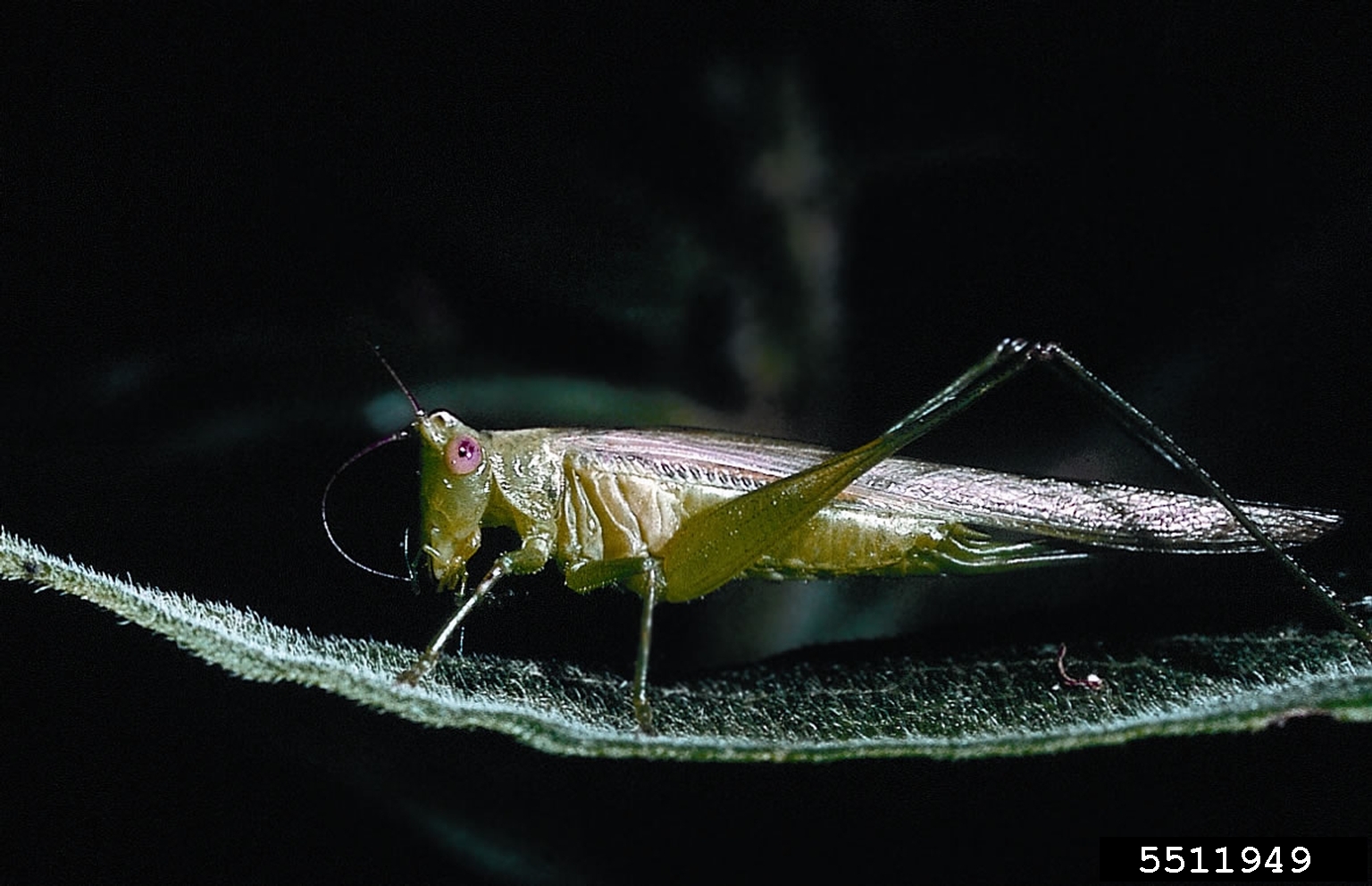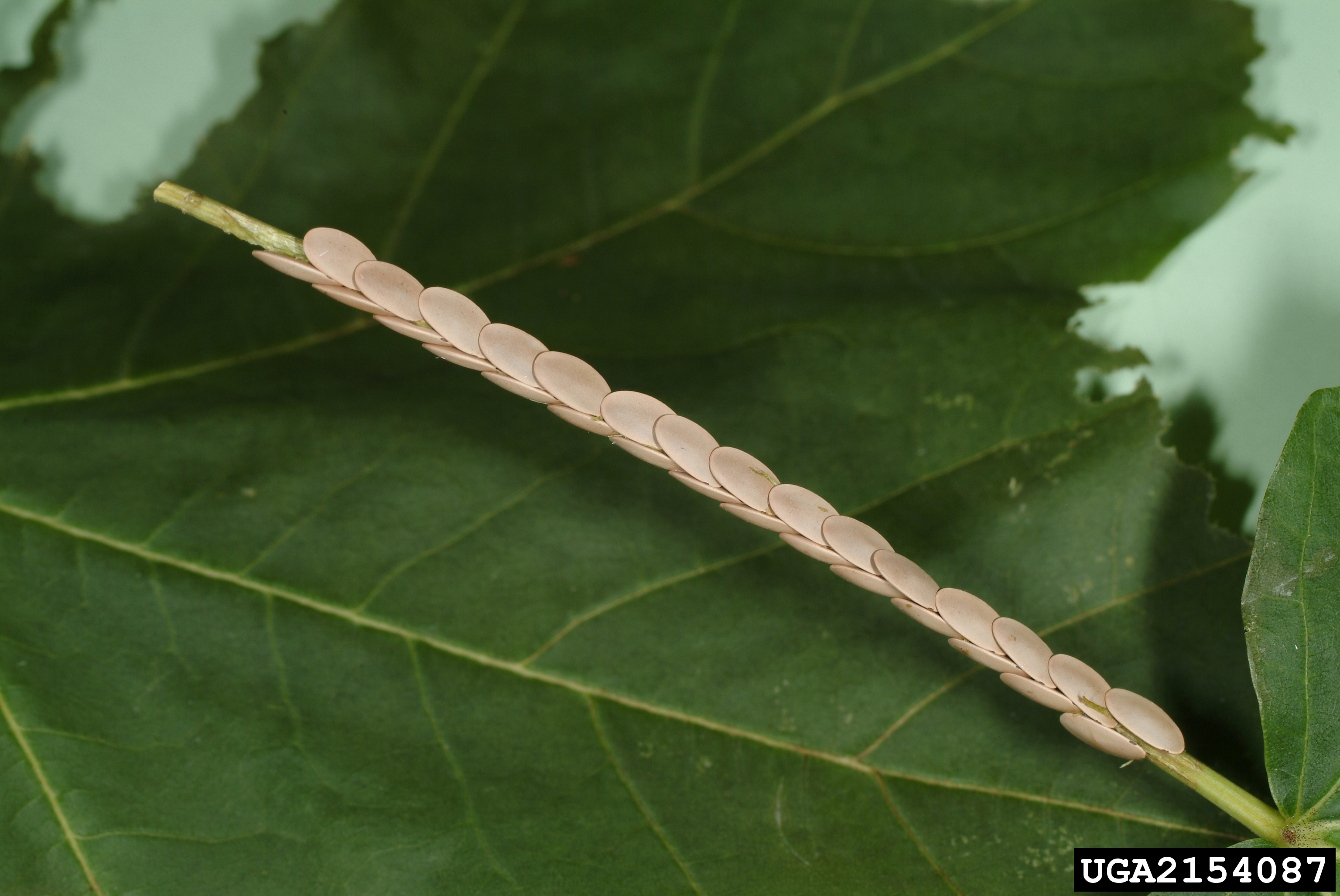Michigan insects in the garden – Week 12: Katydids
A camouflaged chirping insect lurks in the shrubs.

Grasshoppers, crickets and katydids are known for their chirps and jumps. All belong to an insect order known as Orthopterans, and at least 137 species reside in Michigan. Capable of flight, their forewings are usually covered at rest. Each of the three groups within Orthoptera are known for producing sounds and using their large hindlegs to jump when approached. The three groups are distinguished by antenna length and appendages on the rear of the body (Table 1). This week’s article will highlight katydids, Family Tettigoniidae, the least encountered of the three Orthopterans.
|
Table 1. Features to distinguish between the primary groups within the order Orthoptera. | |||
|---|---|---|---|
|
Insect group |
Antenna length |
Color |
Unique features |
|
Crickets |
Half to two-thirds of body |
Black, green or earthy |
Long appendage on both sides of abdomen |
|
Grasshopper |
Two-thirds or less of the body |
Green or earthy |
Day-active, strong fliers |
|
Katydid |
As long or longer than the body |
Often green |
Excellent at camouflage |
In week 6, we profiled katydids as a prey item for the great golden digger wasp. This week, we will take a closer look at katydids when they are not being hunted. Not as well-known as their related cousins, the grasshoppers and crickets, katydids are recognized by their long, thin antenna, which are 1.5 to two times their body length. An additional identifying feature is the presence of four rather than three tarsi on their legs, but gardeners will need to bring a hand lens to view this feature. The tarsi are the last few segments at the end of an insect’s foot.
What are they doing in the garden?
Katydid activity peaks between mid-July through September. More active at dusk or at night, katydids are experts in hiding and are found in vegetation, along tall grasses and in wet areas. They feed on leaves, pollen and flowers but rarely at levels that cause damage in Michigan gardens. The immature life stage, known as a nymph, appears similar to adults but smaller and without wings.
Communicating with chirps and buzzes through rubbing their forewings, their complex sounds are a way of attracting a mate. Interestingly, their hearing organs are located on the leg, and each species produces one to three unique sounds. In fact, their name derives from the words “katy did” that some listeners believe they hear when this insect chirps.
A leaf that moves?
One of the best camouflaged insect species in this group is the greater angle-wing katydid (Microcentrum rhombifolium), whose wing venation closely mimics a leaf (Photo 1). This is one of the larger species at about 2 inches in length. Most records of this species are in mid-lower Michigan. Occasionally, this insect makes its way through screens and may end up inside a home. If this happens, they can be brought outside since they only eat leaves of deciduous trees and shrubs.
A more common species of katydid is the common meadow katydid (Photo 2). Listen to the sounds of the common meadow katydid. With a tinge of red on its abdomen and thorax, this species is found in meadows and other areas of brush. Michigan also has rarer katydids, such as the pine katydid, which has been scarcely observed on the western side of the state.

All katydids spend the winter as eggs laid on plant stems, soil or bark (Photo 3). The similarity between katydid eggs and scale insects is a reason Michigan gardeners should take a closer look at what inhabits their garden before determining if a management strategy is needed. Katydids are one of the many insects that coexist in our gardens and provide a reminder that summer is present. For a comprehensive guide to katydids and other Orthoptera of Michigan, “The Orthoptera of Michigan” is available with information about their distribution in the state and features to identify them to species.




 Print
Print Email
Email










